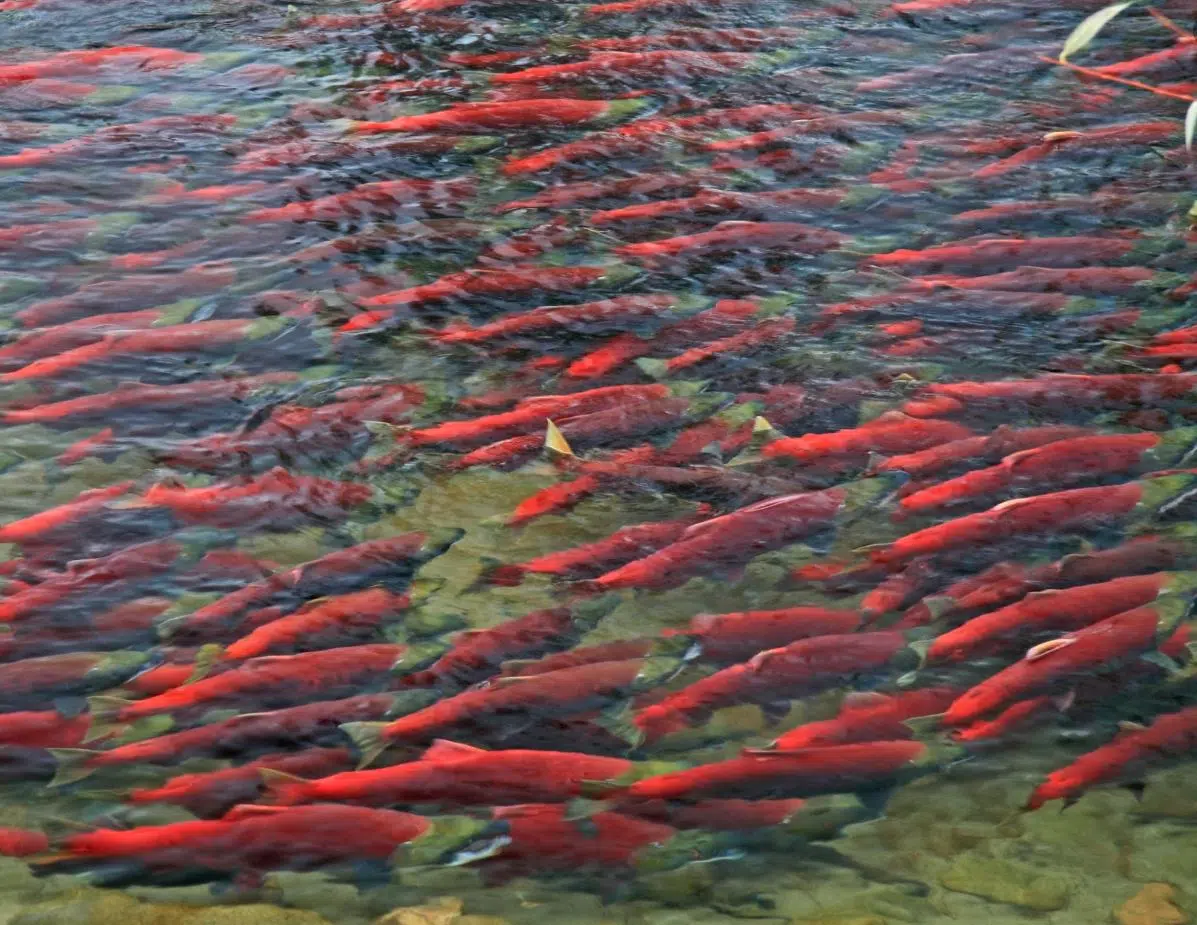
Photo via The Adams River Salmon Society
We’re a week into this year’s dominant Adams River salmon run, and an expert in Fraser River sockeye says the fish are coming.
“By all information we have on hand, I expect that the run of sockeye will be into the Adams River in the near future and there will be fish for people to see,” Scott Decker with the Department of Fisheries and Oceans Canada told NL News.
“A lot of fish have arrived into the Shuswap system. We know that because we have hydroacoustic monitoring going on in the Lower Fraser and we’ve seen the bulk of the run go by.”
Decker says it appears the salmon are in a holding pattern in Shuswap Lake waiting for warmer than normal river temperatures to decrease.
“Afternoon temperatures are about 18 C in the Adams which is above optimal spawning conditions whereas in the lake, if you go down 10 or 15 feet the water is cold,” he said.
“Of course, the fish have only got so much energy reserve so they can only wait so long. It is kind of a waiting game right now and the clock is ticking.”
Decker says while about a million salmon are expected to return to the Shuswap Lake system this year, fewer than half a million are expected to go to the Adams River.
“For what we call the late run sockeye, we expected to see 3.7 million fish make it to the mouth of the Fraser River this year,” Decker said. “That was downgraded to 2.15 million – not including fish caught in fisheries or those that go to other parts of the Fraser – as we started to get information about in-season abundance of fish.”
“I expect when all is said and done and we have estimates on the Adams River and other Shuswap tributaries, it will be even lower.”
In 2010, about 3.8 million of the 28 million returning Fraser River sockeye ended up in the Adams River area while in 2014, just 707,000 of the roughly 19 million Fraser River sockeye that returned. In 2018, that number further dropped to about 535,000 sockeye in Adams River.
“For those people who were there in 2010 or 2014 or 2018, you probably won’t see as many fish as you saw those years, “Decker added. “I would expect several hundred thousand fish – less than 500,000 – in the river. It would be surprising not to see that.”
Decker says over the past few dominant runs, there have been more salmon going to the Shuswap and Eagle rivers, but officials are not yet sure if that is a long-term trend.
“If you have a system like the Adams where the spawning gravel is just so productive, even though there are fish spawning in the other rivers, the egg survival is lower and you end up with the Adams dominating as far as the number of juveniles in the lake,” he said.
“What we might be seeing is the quantity or the quality of the Adams River has gone down over the last couple of cycles or possibly its gone up in maybe the Shuswap or the Eagle. We haven’t really dwelled into that.”
“If you are familiar with the Adams, you know the major spawning area up from the mouth of the river is fairly limited area with a lot of side channels and its really concentrated,” Decker added.
“You can imagine if high flows in the spring cut off any one of those major side channels, you could potentially have a lower quantity of spawning habitat for the fish to use.”
Decker also expects the Chilko River system to see the largest sockeye in B.C. return this year.
“The thing that is a little bit disconcerting this year for, not just the Adams, but for all the sockeye populations coming back to the Shuswap is that the returns, whatever they end up being, are going be a lot less than what we expected based on what we saw four years ago and what we see for average survivals,” he said.
You’ll find a live underwater camera at the Tsútswecw Provincial Park here.













